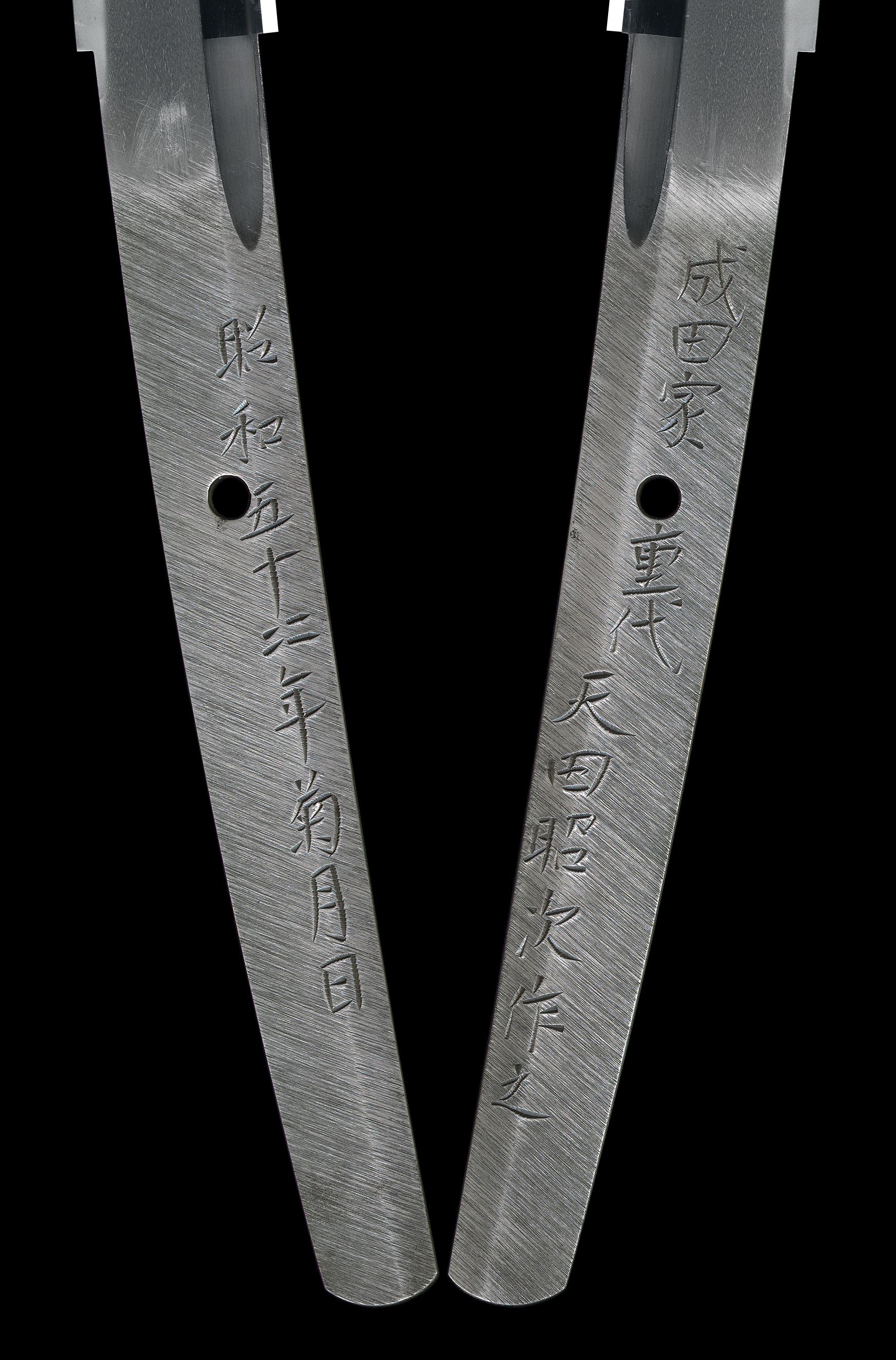Previous answer is
Signature : Narita-Ke Judai Amada Akitsugu Saku Kore
Showa 54 Nen Kiku Gatsu Hi
成田家重代天田昭次作之
Special Features: Amada Akitsugu born as Seiichi, was the eldest son of Tadayoshi Amada and was born in Niigata
City, Niigata Prefecture, in 1927 (Showa 2). He began training at the Nihonto Renshujo (Japanese
Sword Training Institute) in 1940.
• Below are notable points from his career:
• 1940: Started training at the Nihonto Tanren Denshujo (Japanese Sword Forging and Polishing
Training Institute)
• 1952: Produced a sword for the Treaty of Peace and the Ise Jingu Shrine's Shikinen Sengu
Omiyabito-tachi Sword and served as an assistant to Miyauchi Shohei
• 1954: Approved as a swordsmith by the Cultural Properties Protection Committee
• 1955: Participated in the 1st Swordsmithing Technique Presentation Exhibition and received the
Excellence Award (also received Excellence Awards in the 3rd and 4th exhibitions)
• 1959: Started serious research on homemade iron
• 1977: Received the Masamune Award (Yamashiro tradition) at the Sakumeikan-to Exhibition
• 1985: Received the Masamune Award for the second time (Soshu tradition) at the New Sword
Exhibition
• 1990: Became a director of the All Japan Swordsmiths Association
• 1996: Received the Masamune Award for the third time (Bizen tradition) at the New Sword
Exhibition
• 1997: Designated as a Living National Treasure for "Japanese Swords"
• 1999: Awarded the Order of the Rising Sun, Gold Rays with Rosette (4th class)
• Passed away on June 26, 2013, at the age of 85
• After the end of World War II in Tokyo, he returned to Niigata temporarily and received permission
to create swords in 1954 (Showa 29). He started making swords in the Soshu and Bizen
traditions, using his outstanding skills. He conducted extensive research on homemade iron
and created swords reminiscent of the Kamakura period and the works of the Muromachi
period. He received the Masamune Award three times.
• This work is a masterpiece by Akihito Amada, a Living National Treasure, and is also unique in its
size. It is a highly recommended piece.
A brief message from Aoi Art: Since becoming a Living National Treasure, only a very few of his
works have been recognized, and many have to be awarded to meet the criteria. Especially,
achieving the Masamune Award is extremely challenging, and without surpassing this hurdle, one
cannot become a Living National Treasure. After being designated as a Living National Treasure in
1997 (Heisei 9), he continued to strive and produce outstanding works. We highly recommend it.
==============================================
Appraisal Quiz #766 (October 28th, 2023)
Who made this sword do you think ?
==============================================
Blade Length: 66.7 cm (26.3 inches)
Curvature: 1.4 cm (0.55 inches)
Mei-Nail Holes: 3 (2 filled)
Width at Base: 3.04 cm (1.2 inches)
Width at Tip: 2.2 cm (0.87 inches)
Thickness: 0.66 cm (0.26 inches)
Sword Weight: 785 grams (27.7 ounces)
Shape: Wide and moderate thickness Katana with a deep
curvature and extended edge, embodying the characteristics of the era.
Jigane: Itame-hada and mokume-hada, creating a superb texture.
Hamon: The blade features a variety of temper patterns, including choji midare and ko-notare, giving it a distinct and elegant appearance.
================================================
Answer will be posted at next Appraisal Quiz.
================================================
(Please acknowledge not replying to mail about Appraisal Quiz by our convenience.)


